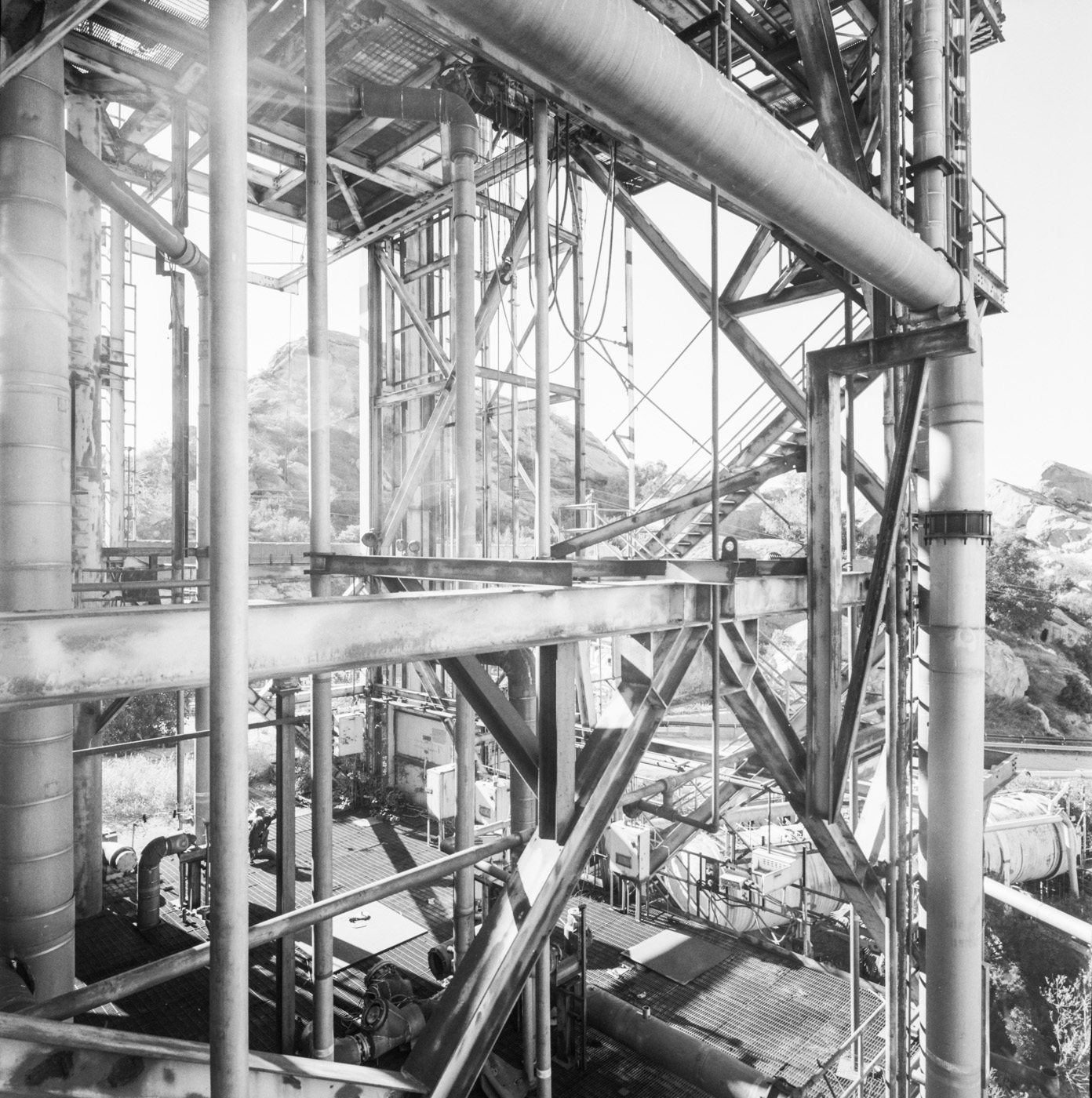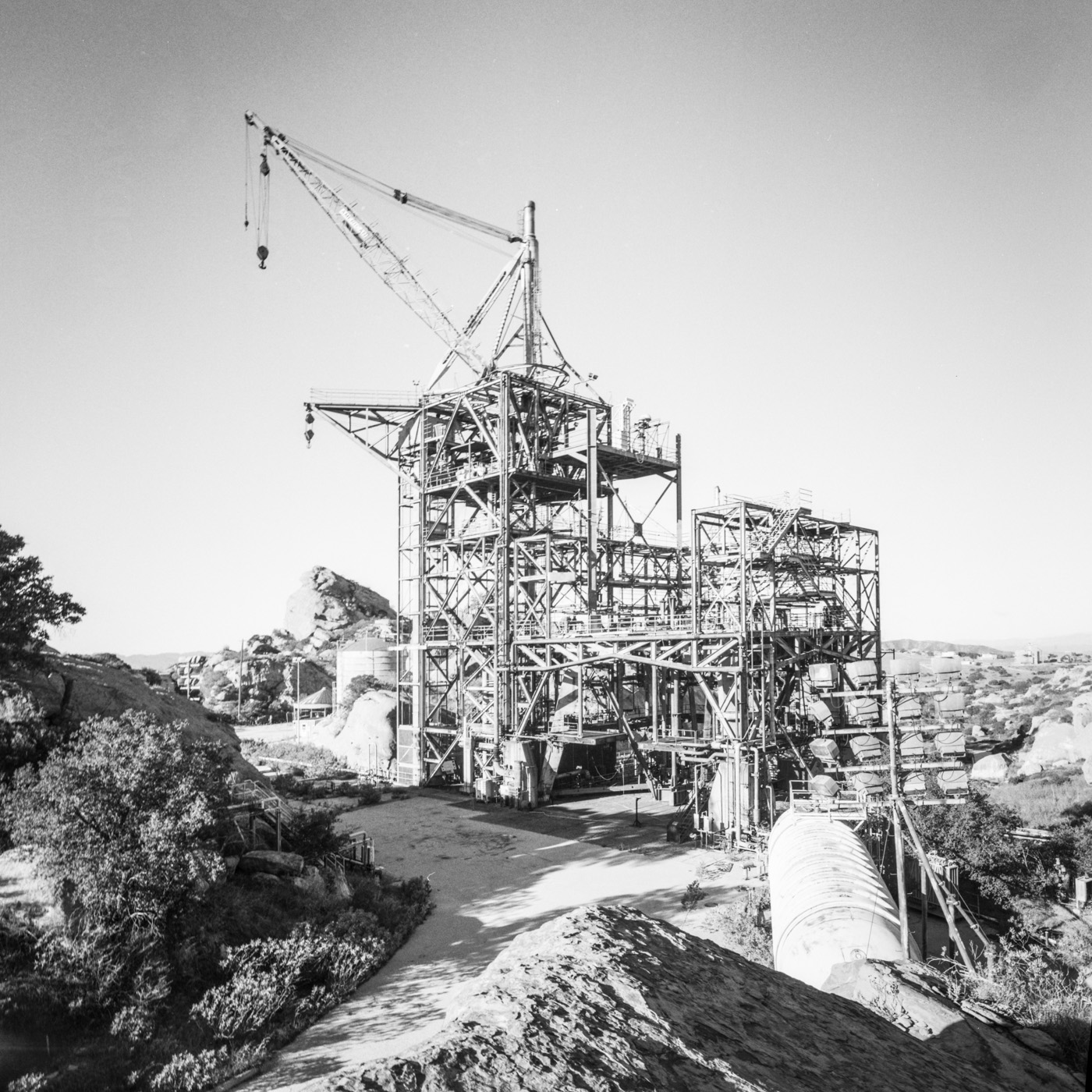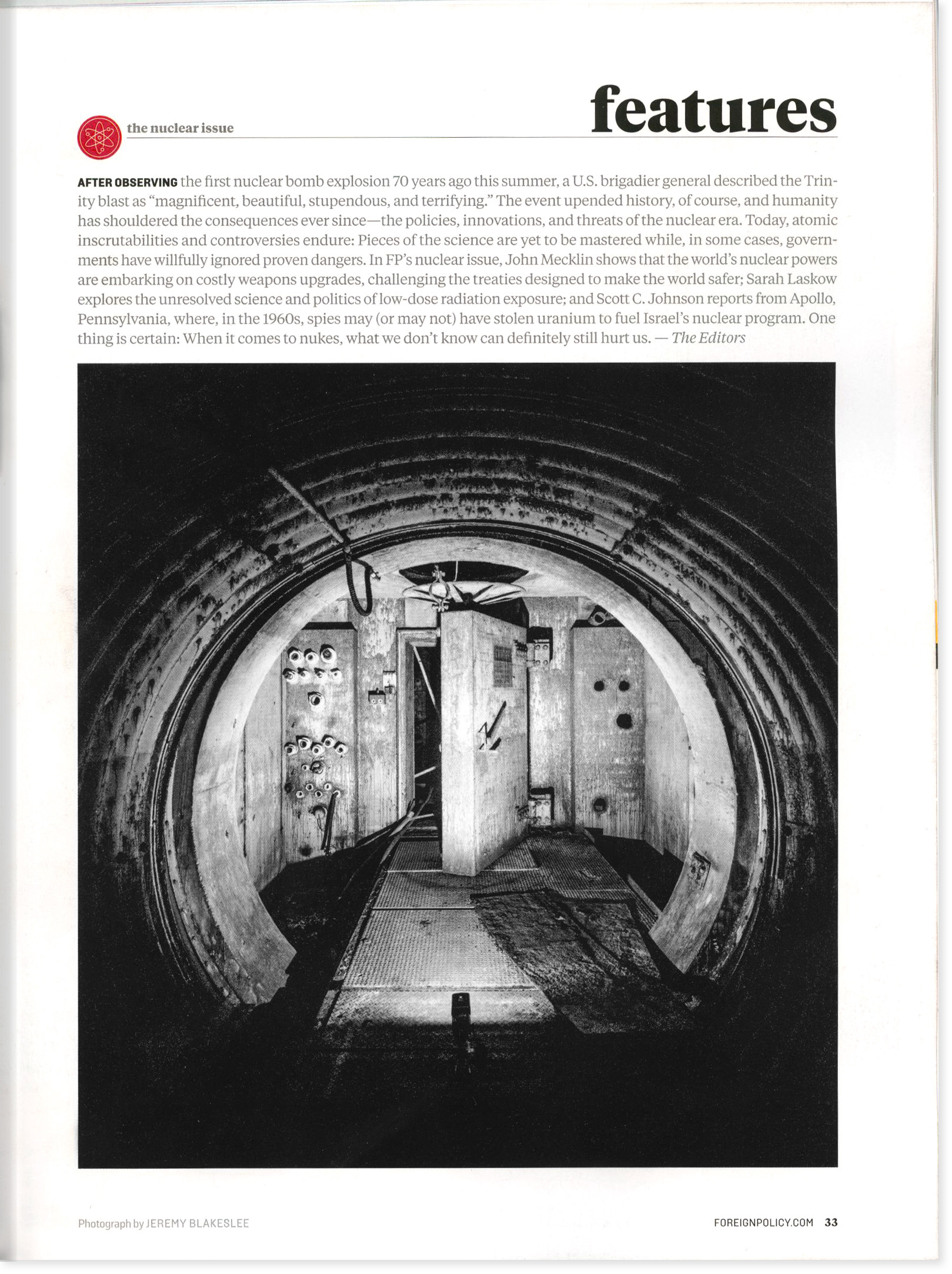 The blast lock in The Titan I 851-C Missile Silo for Foreign Policy Magazine
The blast lock in The Titan I 851-C Missile Silo for Foreign Policy Magazine Nike Missile Site SF - 88 - Missile Battery
Nike Missile Site SF - 88 - Missile BatteryNIKE Missile Sites
The Nike Missile project was a landmark development in the field of air defense during the Cold War, and it played a significant role in safeguarding the United States from potential Soviet Union attacks. The project was initiated in the mid-1940s and was carried out by a team of experts at Bell Labs in collaboration with the US Army. Bell Labs, one of the leading technology companies at the time, was tasked with developing and producing the advanced radar and guidance systems that would be used in the Nike Missile system.The project resulted in the development of two types of missiles, the Nike Ajax and the Nike Hercules, both of which were equipped with radar and guidance systems provided by Bell Labs. The Nike Ajax was designed to intercept enemy aircraft at low altitudes, while the Nike Hercules was designed to engage higher-flying aircraft and missiles. The system was deployed at various strategic locations across the US, providing a multi-layered defense against potential Soviet attacks.
The system was a crucial component of the US defense strategy, providing a layer of protection against Soviet air attacks. The project also demonstrated the US's commitment to maintaining its military superiority and safeguarding its national security during a time of great tension and uncertainty.

Nike Missile Site SF - 88 - Hercules No.4
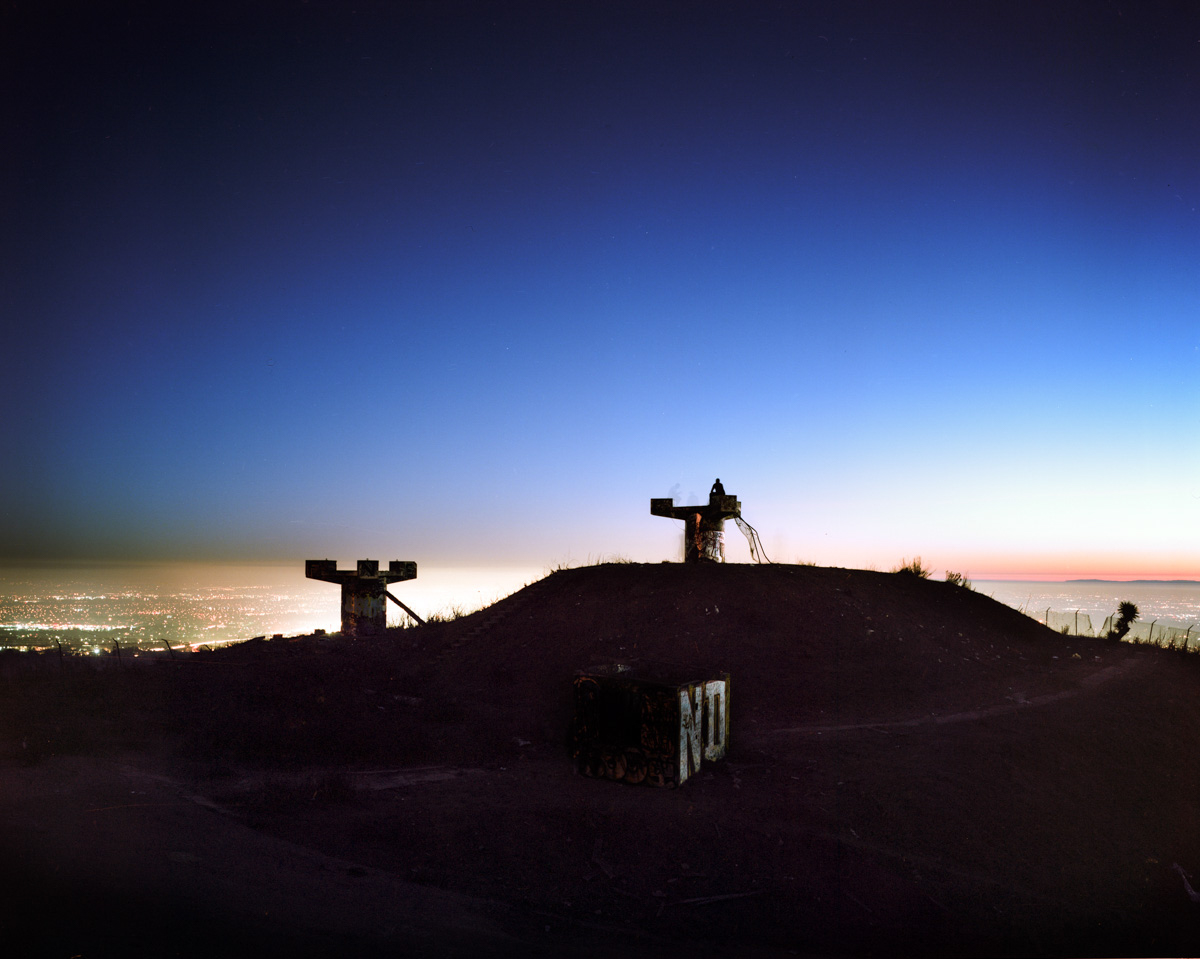
Nike Missile Site LA - 29
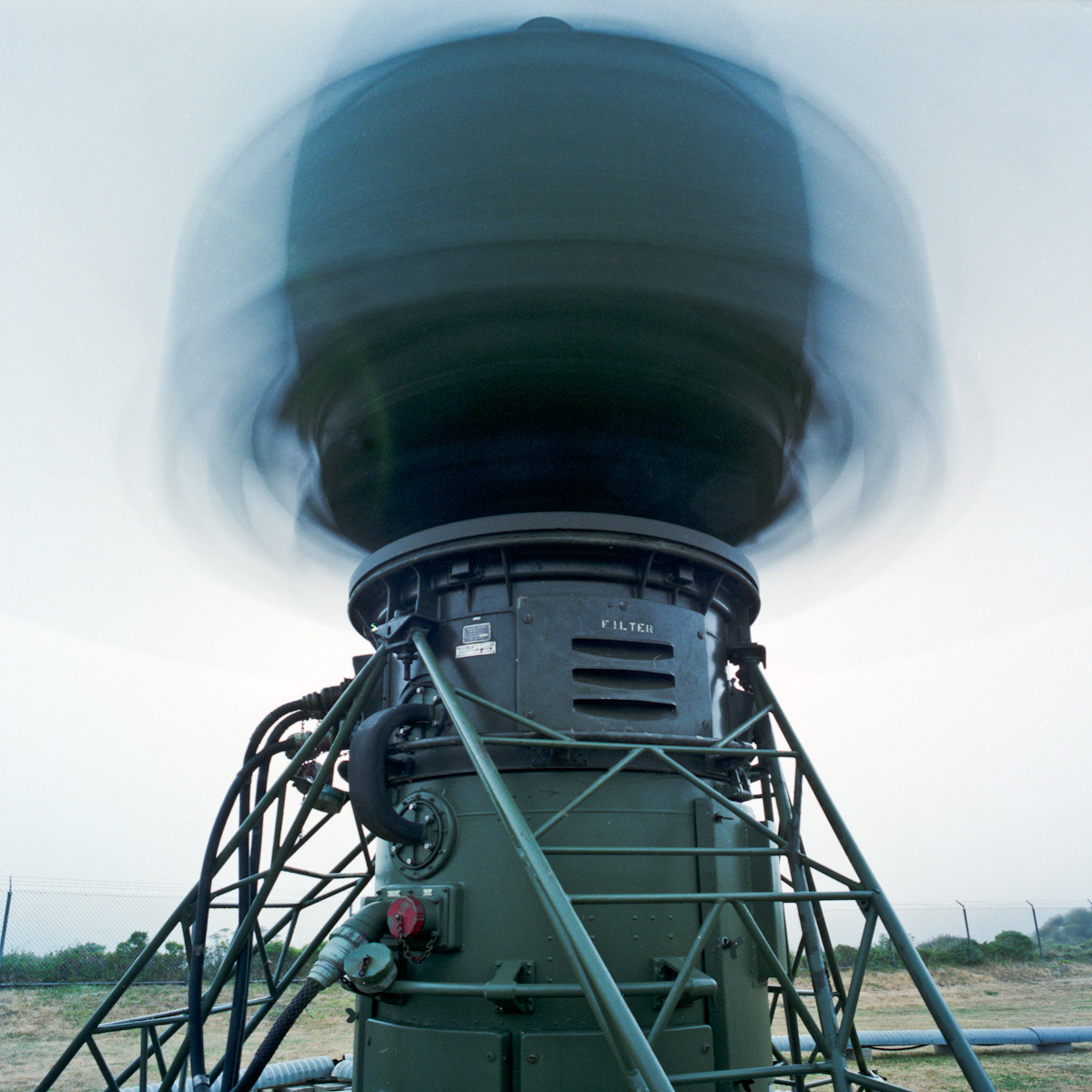 Nike Missile Site SF - 88 - Acquisition radar
Nike Missile Site SF - 88 - Acquisition radar Nike Missile Site SF - 88 - Hercules No.2
Nike Missile Site SF - 88 - Hercules No.2 Nike Missile Site SF - 88 - Radar Van
Nike Missile Site SF - 88 - Radar Van

Nike Missile Site SF - 88 - Hercules No.3
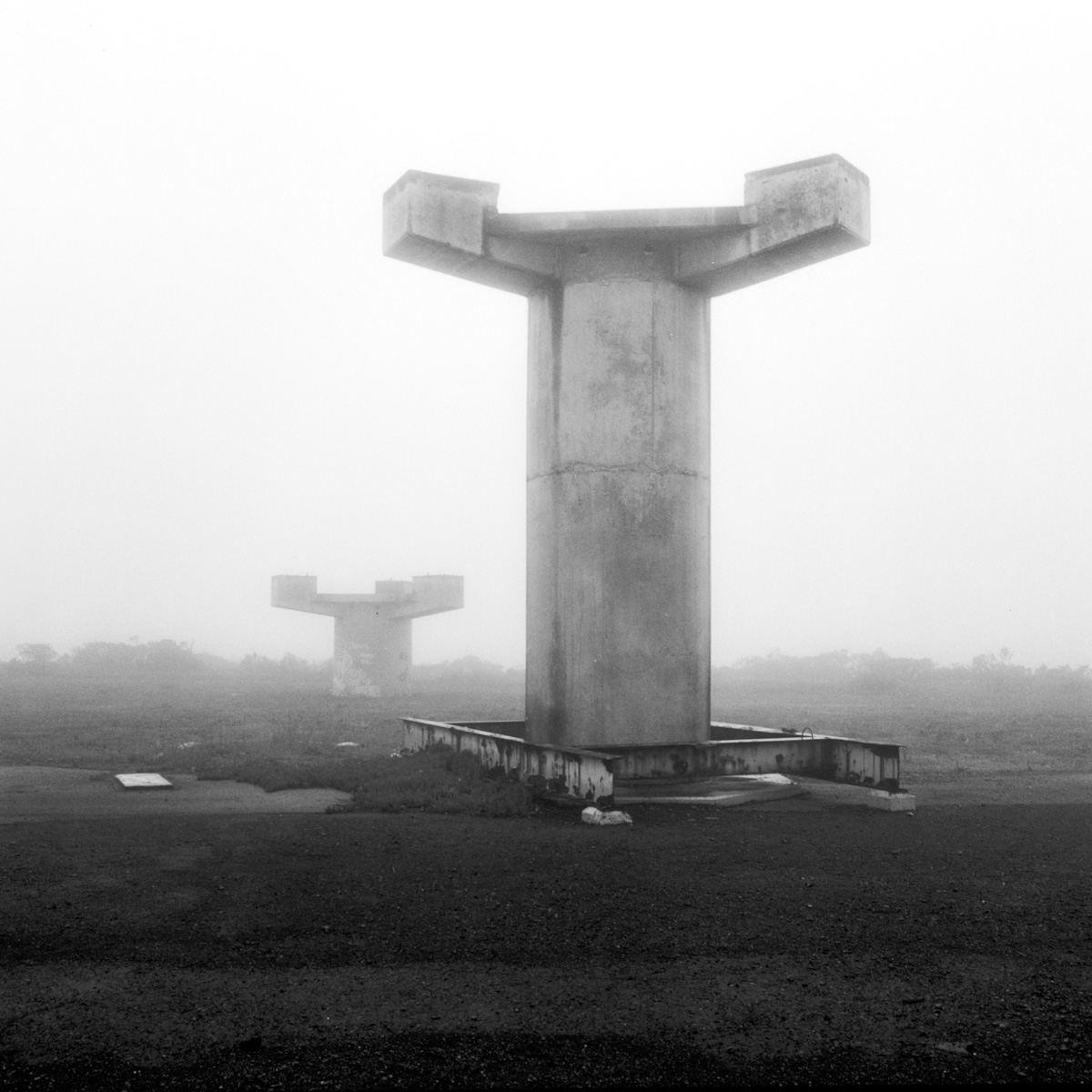
Nike Missile Site SF - 88 - Radar Stands

Nike Missile Site SF - 89 - Launch Area
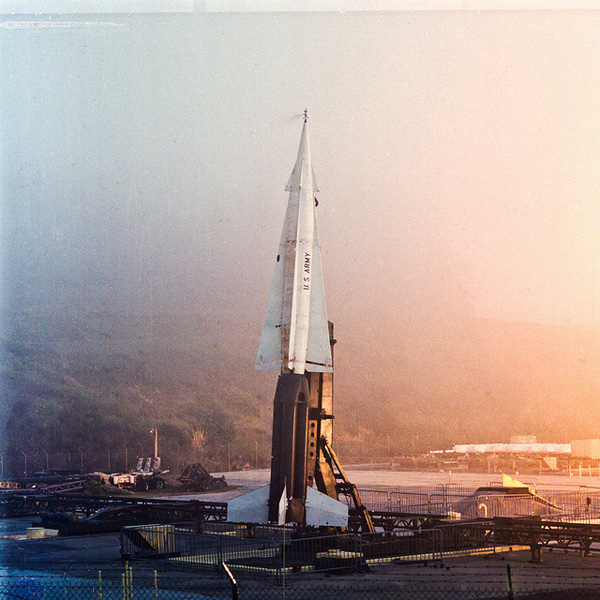
Nike Missile Site SF - 88 - Hercules
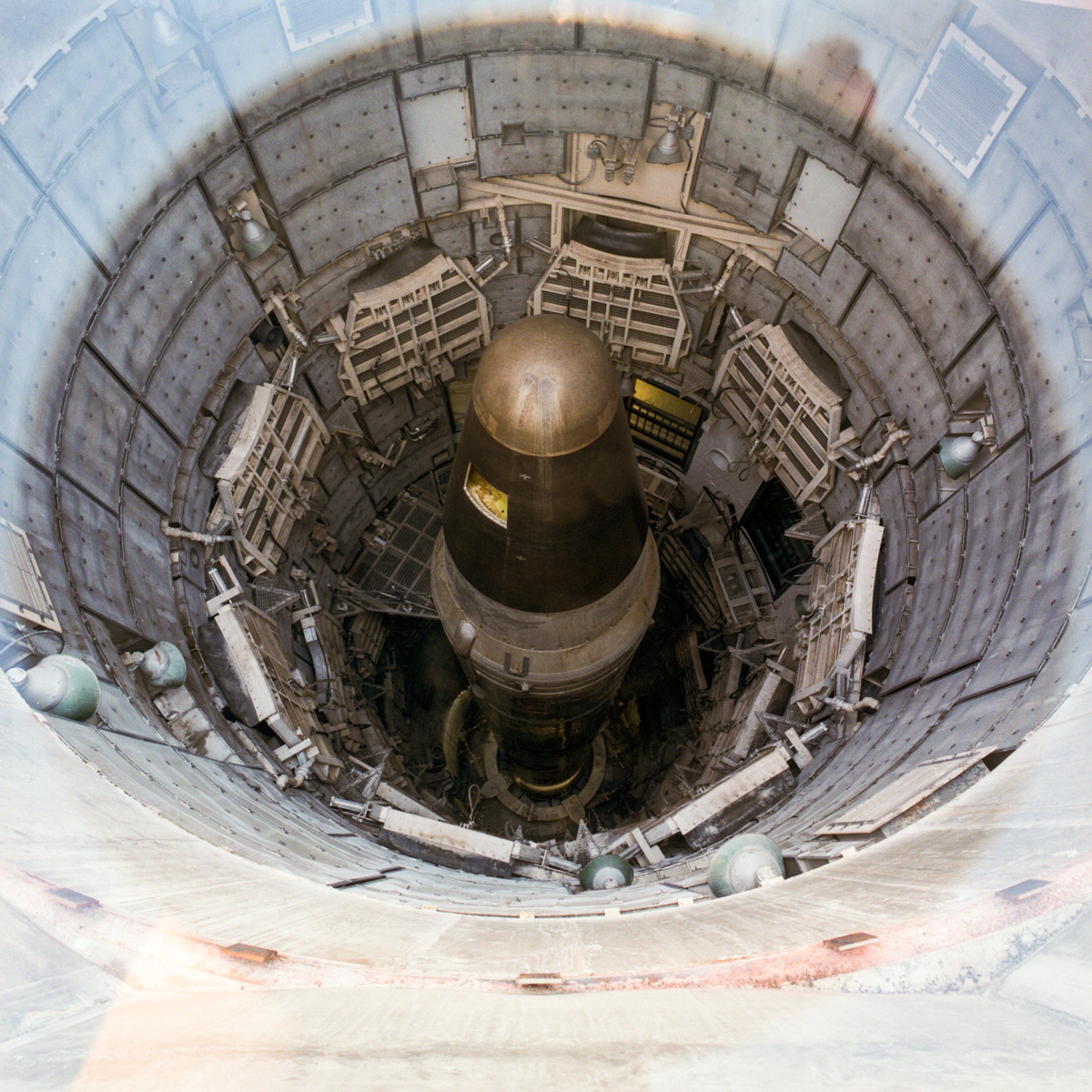 Titan II ICBM
Titan II ICBM
 Former Titan Missile Complex with the 851st Strategic Missile Squadron
Former Titan Missile Complex with the 851st Strategic Missile Squadron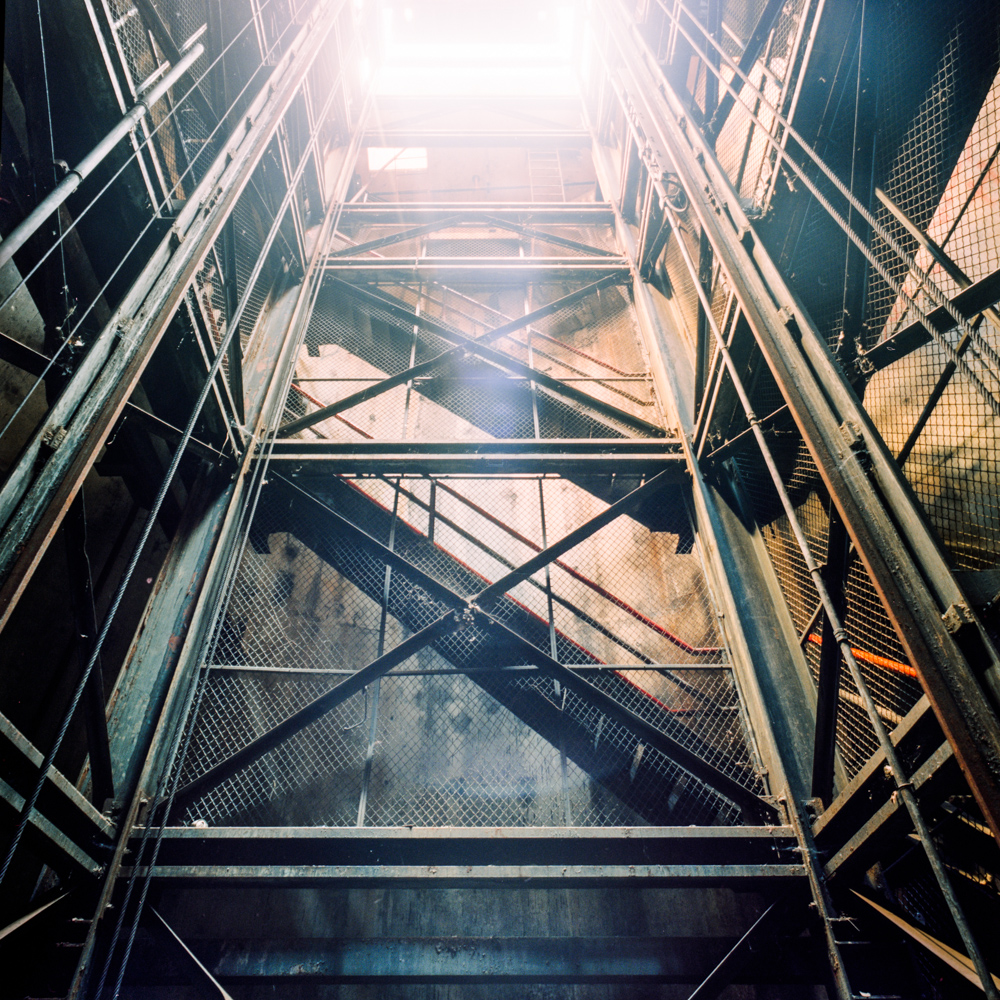

Titan I - ICBM
The sites were designed to provide the US with a second-strike capability, ensuring that the country would be able to respond to a nuclear attack even if its main military forces were devastated. The presence of the Titan I ICBMs also served as a deterrent, sending a message to potential adversaries that the US was prepared to defend itself and its allies in the event of an attack. In addition, the deployment of the Titan I ICBMs helped to maintain the balance of power during the Cold War, as the US and the Soviet Union both sought to build up their nuclear arsenals in a bid to achieve strategic advantage. 
Titan I
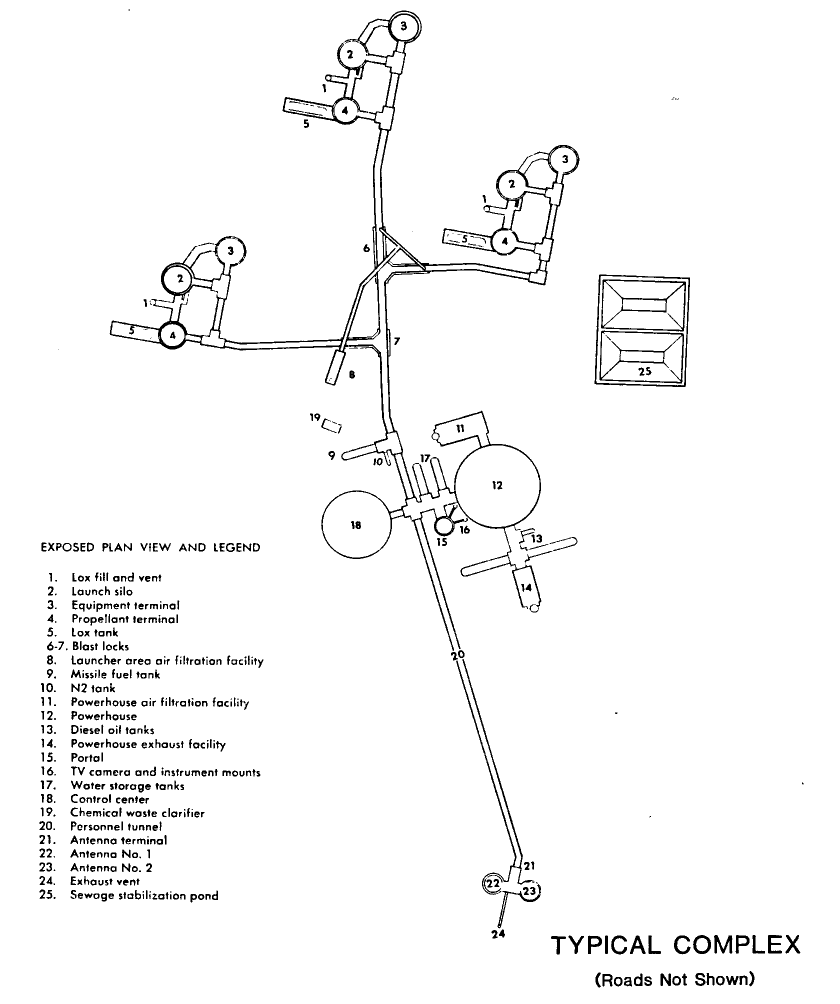



Atlas D - ICBM
The Atlas D Intercontinental Ballistic Missile (ICBM) was a significant development in the history of nuclear weapons and Cold War-era military technology. As one of the first successful ICBMs developed by the United States, Atlas D represented a major milestone in the ability of nations to deliver nuclear weapons over long distances. The deployment of Atlas D and other ICBMs provided a deterrent to potential adversaries, helping to maintain stability during the tense and uncertain period of the Cold War. Furthermore, the development of the Atlas D required significant advances in rocket science, materials engineering, and other areas, making it a key catalyst for the growth of these fields. In this way, Atlas D and other early ICBMs played a crucial role in shaping the technological landscape of the latter half of the 20th century and beyond.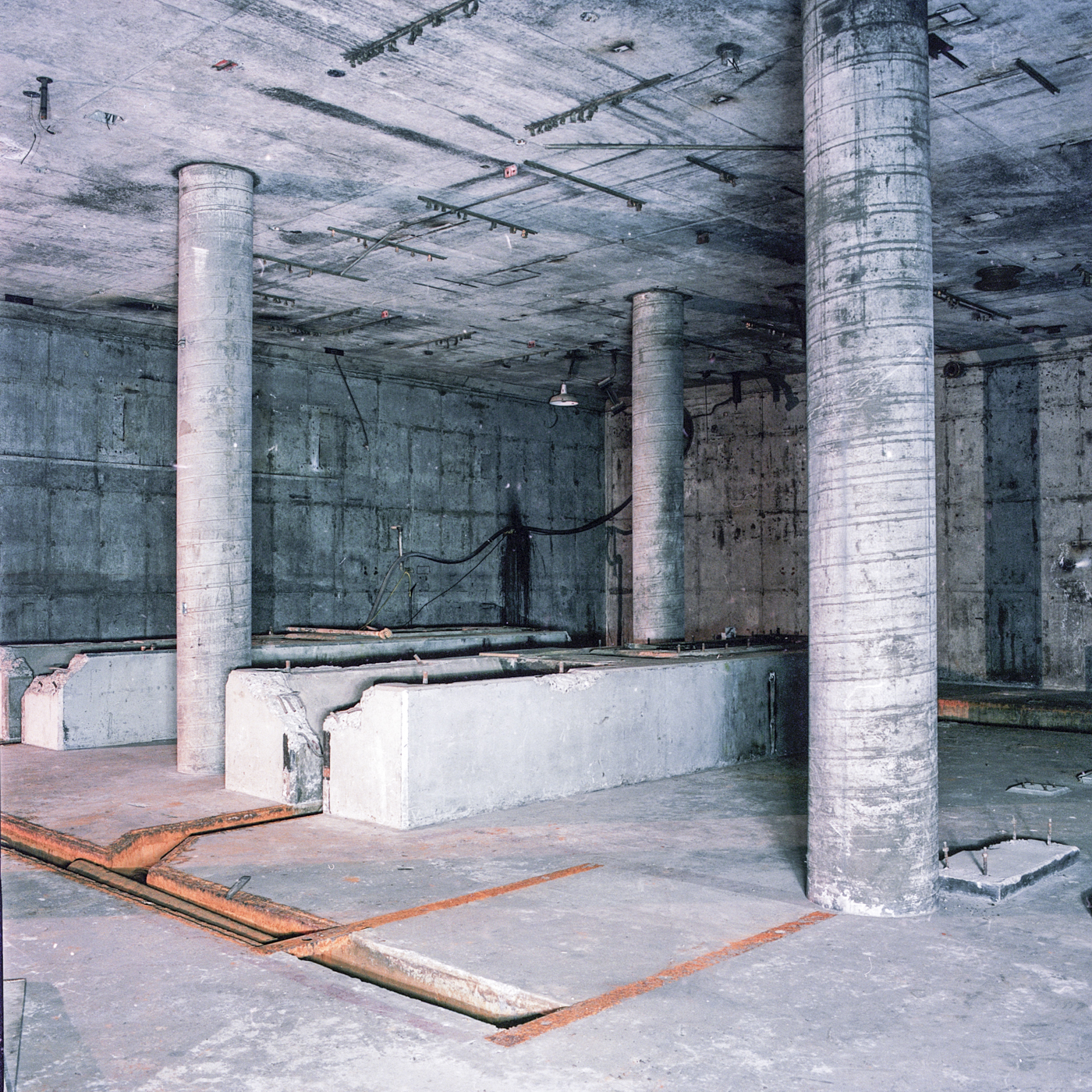

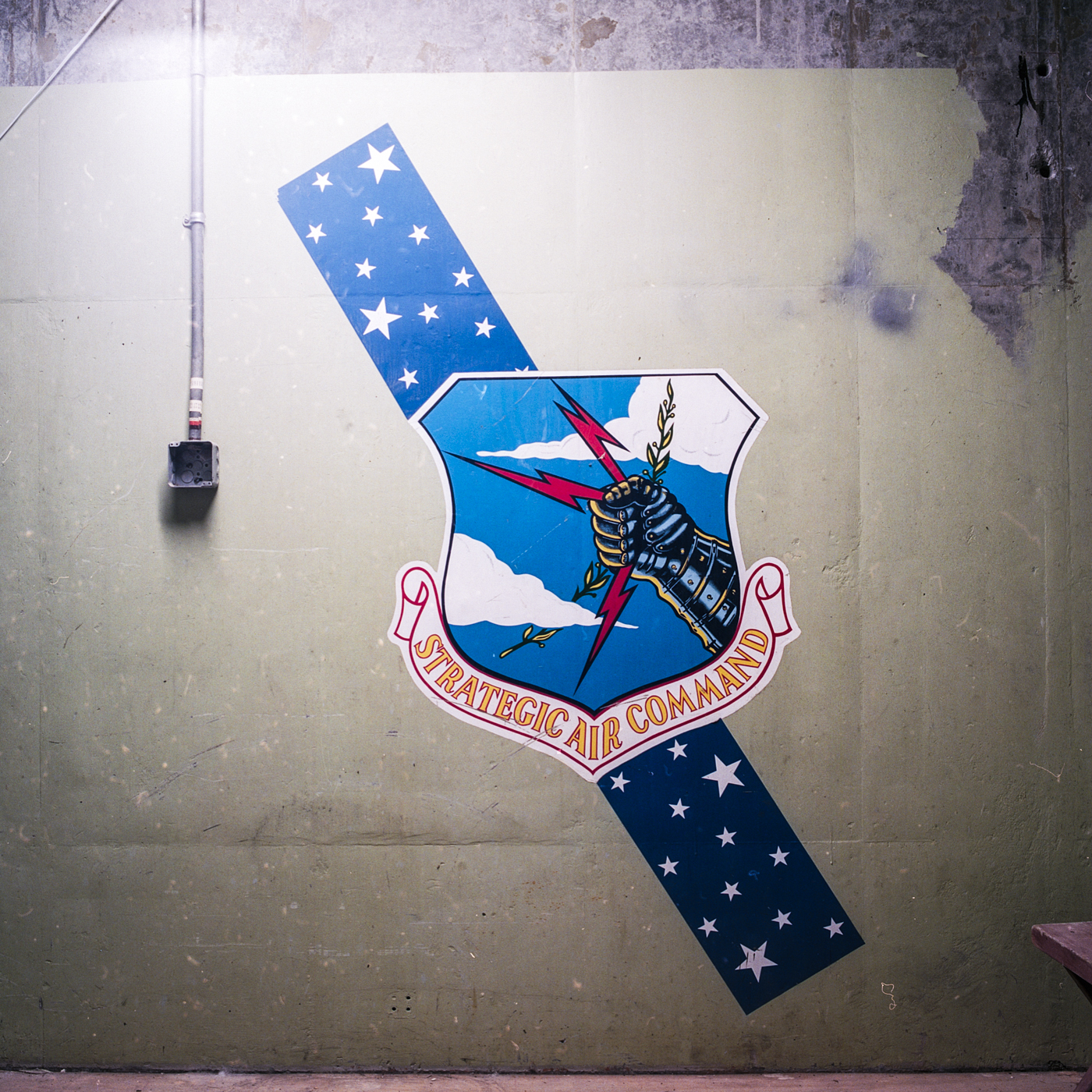
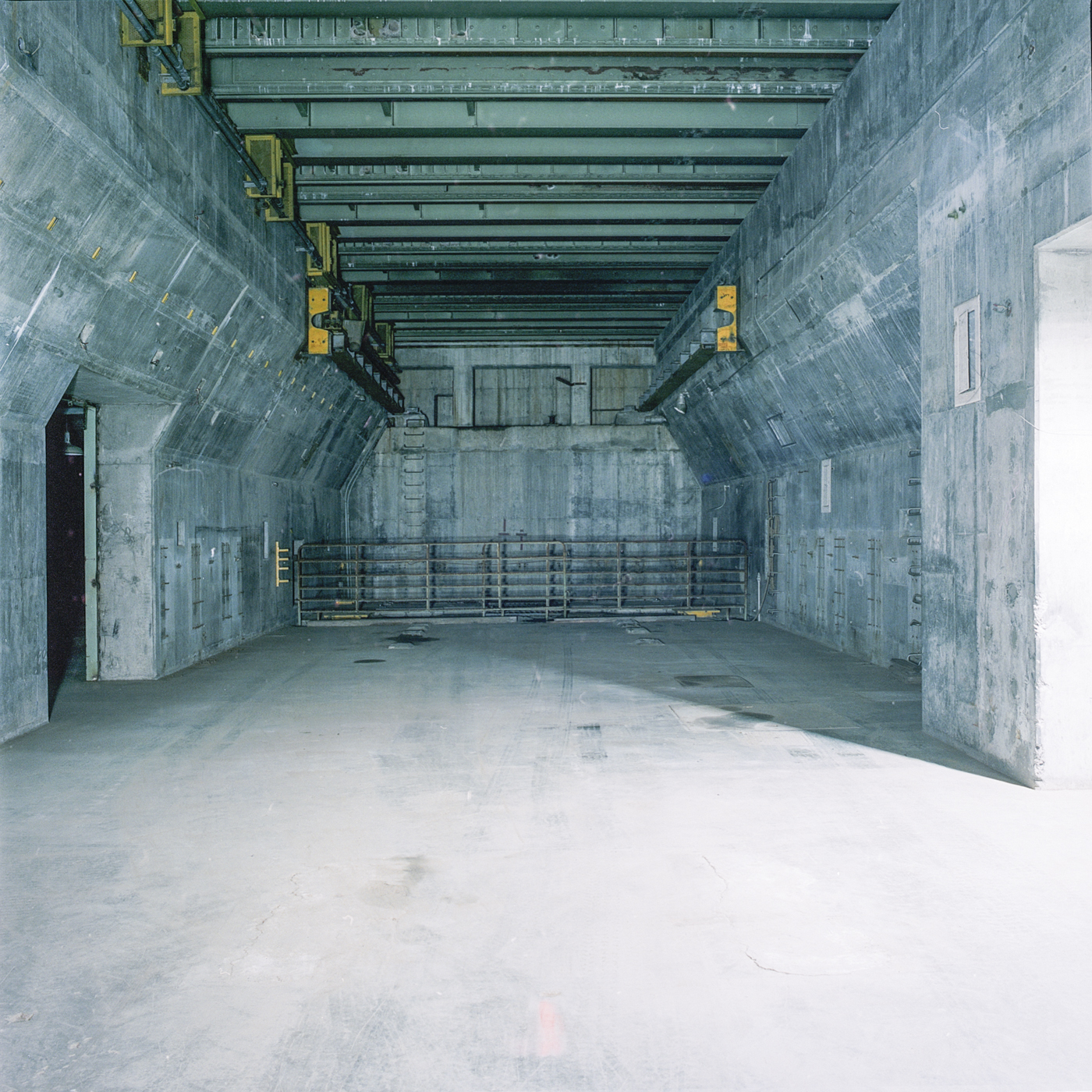

The Santa Susanna Field Labratory - NASA
SSFL is a former rocket engine testing and nuclear research facility located in the Simi Hills of Southern California. Established in 1947, SSFL played a critical role in the development of early rocket technology and nuclear power. During the 1950s and 60s, the laboratory was a hub of activity for the development of advanced rocket engines and rocket-powered aircraft. The laboratory's cutting-edge research and development work helped to establish the United States as a leader in space exploration and solidified its dominance in the emerging field of missile technology.
In addition to its work in rocket technology, SSFL was also a major site for nuclear research and development. The facility was one of the first to produce commercial nuclear power, and its work helped to lay the foundation for the commercial nuclear power industry. However, SSFL's legacy has also been marred by several significant accidents, including several nuclear meltdowns, which have led to environmental contamination and health concerns for nearby communities. The site is currently undergoing a comprehensive cleanup effort, and its future remains uncertain. Despite its controversial history, SSFL's impact on the development of rocket technology and nuclear power cannot be denied, and it remains a significant site in the history of 20th-century technology.
 Rocket engine test stand
Rocket engine test stand


